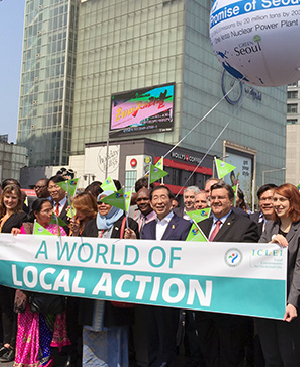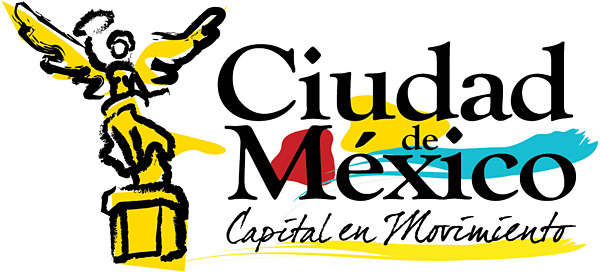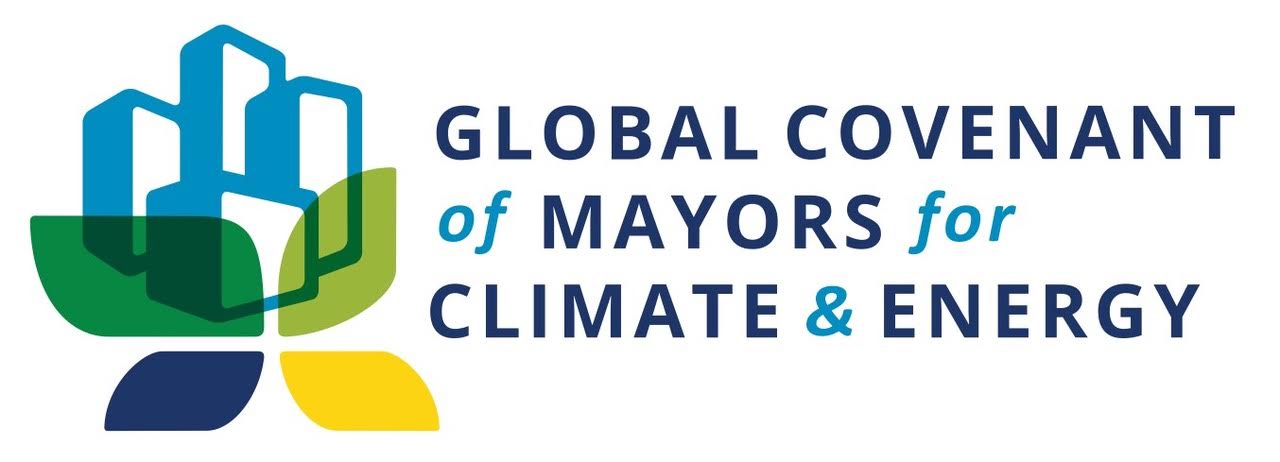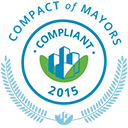- Home
- Reporting entities
- Oslo Municipality
Oslo Municipality
Norway Governing Mayor: Raymond Johansen-
Population 647676

-
Area 480.76km 2
-
GDP N/AN/A
-
Targets by N/A N/Aemission
Targets by Oslo Municipality
There are no targets yet
- Start year: 2022
- Type: Climate mitigation plan
- Start year: 2013
- Type: Climate adaptation /resilience plan
- Start year: 2009
- Type: Education/Awareness Raising
- Status: In operation
As 340 000 households start separating two more categories of waste, a lot of questions appear: When do we start? How do we start? What is food waste and what is considered as plastic packaging? The City of Oslo has the answers, and is working hard to get them out to the population.
Read More Read Less- Waste
- Start year: 2012
- Type: Technical/Infrastructure investment
- Status: In operation
Ruter, the company that coordinates Oslo’s public transport,
has ordered five emission-free hydrogen buses and climateneutral
fuels such as biogas, bioethanol and biodiesel are
already in use. Oslo sees the development of zero-emission
buses as an important next step. Ruter, Akershus county,
Oslo and the Zero Emissions Resource Organization (ZERO)
have established HyNor Oslo Buss. The buses are electric vehicles
with hydrogen fuel cell power sources; the hydrogen
is used to generate electricity, and the only gas emitted is
water vapor. Regenerative braking technology captures and
reuses braking energy, keeping hydrogen consumption low.
The hydrogen will be produced at a fuelling station via water
electrolysis that uses electricity from renewable sources.
The five buses have been put into service on a route stretching
from near the fuelling station to Oslo starting in summer
2012.
- Transport

- Start year:
- Type: Technical/Infrastructure investment
- Status: In operation
Oslo has taken a number of steps to increase the share of electric vehicles in the city’s traffic. The city is already a world leader measured in terms of the number of electric vehicles relative to its population. In 2011 a project was carried out with the long-term aim of electrifying the municipal vehicle fleet.
There is considerable interest in replacing polluting fossil fuel driven vehicles with cars that run on renewable electricity. The most important environmental benefit of switching to electric vehicles is the reduction in emissions to air, but they are also considerably quieter in use. In June 2012, Oslo has a population of about 600 000 and 1545 electric vehicles.
Making charging stations more easily accessible can for example encourage people living in apartment buildings without their own garages to switch to electric cars. By the end of 2011, Oslo had established 400 charging stations, and a further 200 are to be established in 2012.
Oslo also has a scheme that offers grants towards the cost of setting up charging stations, which are available to joint owners of residential buildings, such as housing cooperatives, and to various commercial actors.
- Transport
- Start year: 2003
- Type: Organizational / Governance
- Status: In operation
In 2003 Oslo decided to introduce environmental management systems for all municipal agencies. The “Green Municipality” initiative initiative iincludes systems for environmental certification and environmental auditing and reporting.
Read More Read Less- Other Emissions
- Start year: 2010
- Type: Assessment/Research
- Status: In operation
Oslo is a partner in FutureBuilt, a collaborative effort involving the municipal authorities of Oslo and Drammen, a number of central government agencies and various construction and architecture enterprises. The object of the 10-year programme (2010-2020) is to create prototype projects serving as models of high-quality architecture and climate-friendly urban areas. FutureBuilt is an arena for innovation, competence building and exchange of experience, providing a learning platform for clients, architects, advisers, entrepreneurs, municipal administrations as well as users.
Read More Read Less- Buildings
- Start year: 2010
- Type: Technical/Infrastructure investment
- Status: In operation
In February 2010, a biogas plant was opened at the Bekkelaget waste water treatment plant. Here, biogas is produced from sewage sludge and upgraded for use as transport fuel. Biogas from sewage is climate-neutral, and is already being used to fuel more than 90 heavy vehicles, mainly refuse trucks and buses. The Bekkelaget plant treats sewage from roughly 40 % of Oslo’s population, and produces enough biogas to replace fossil fuel used by about 80 buses.
Read More Read Less- Start year:
- Type: Policy/Strategies/Action Plans
- Status: In operation
Oslo has taken active steps to implement measures to improve the public transport system as part of the effort to reduce car traffic in Oslo and promote greater use of environmentally friendly transport methods. A new priority system for traffic lights including real-time information for arrivals and departures has been introduced. To provide satisfactory access to public transport and enhance satisfaction for all user groups, Oslo is working to incorporate universal design principles into all public transport stopping places.
Read More Read Less- Transport
- Start year: 2008
- Type: Technical/Infrastructure investment
- Status: In operation
Oil heating is responsible for one third of Oslo’s greenhouse gas emissions. To reduce emissions, the City Council has set the target of phasing out oil heating in Oslo by 2020.
Read More Read Less- Start year: 2010
- Type: Technical/Infrastructure investment
- Status: In operation
Oslo residents separate their food waste at the source and
it is collected separately in green plastic bags. A biological
treatment plant is now being constructed in Nes municipality,
northeast of Oslo, scheduled to open January 1st 2013.
Biogas from one kilo of food waste equals about 0.13 l of
gasoline, which means that a bus can operate some 500
meters on 2 kilos of food waste. The biogas plant will produce
some 4.5 million Nm3 upgraded biogas and 90,000 m3
bio fertilizer (liquid) per year, enough to run approximately
200 buses on biogas and provide 100 medium-sized farms
with bio fertilizer yearly.
- Waste
- Start year: 2010
- Type: Technical/Infrastructure investment
- Status: In operation
Cycling in Oslo currently accounts for 5 % of all trips made on weekdays. While cycling here is unlikely to reach levels seen in cities further south due to local climate and topography, the goal is to raise this to 12 %. A special project was launched in 2010 to improve conditions for cycling in central Oslo, and efforts are underway to complete the main cycle network by 2015.
Read More Read Less- Transport
- Start year: 2012
- Type: Assessment/Research
- Status: In operation
Oslo is a hilly city, so there are considerable variations in elevation from one part of the drinking water supply system to another. The pipeline network is therefore divided into many different pressure zones. Pressure-reducing valves are used to prevent water from being supplied to peoples’ homes at excessive pressure. However, reducing water pressure involves a loss of energy – and we now have plans to recover this energy in the form of electricity.
Read More Read Less- Start year:
- Type: Organizational / Governance
- Status: In operation
The municipal forests are managed and driven according to goals and guidelines adopted by the City Council, in compliance with the principles of sustainability. Biodiversity should be preserved and developed. Management has outdoor and conservation interests as the supporting basis, and economic considerations will be subordinated to these (measures and policies adopted by City Council 6/16/2005).
Oslo's forests have environmental certification
Oslo's forestry operations was first certified in 2002 according to the Living Forests standards. To be certified, we follow a number of goals:
-Follow Living Forests standards.
-Utilizing selective felling where the biological conditions are right for it.
-Ensure that the biological records are used in the management and operation of the woods.
-Developing employees' environmental expertise through regular training.
-Prevent forestry operations to pollute.
- Other Emissions
- Start year: 2008
- Type: Technical/Infrastructure investment
- Status: In operation
One of the most important environmental goals for Ruter, the company which coordinates Oslo’s public transport, is to phase out the use of fossil energy by 2020. Ruter is therefore carrying out large-scale trials of climate-neutral fuels. The company has ordered five emission-free hydrogen buses, and climate-neutral fuels such as biogas, bioethanol and biodiesel are already in use.
Read More Read Less- Transport
- Start year: 2002
- Type: Technical/Infrastructure investment
- Status: Completed
Cutting down on energy use does not signify that Oslo is facing a dark future. On the contrary, the use of intelligent lighting provides adequate illumination while expending less energy. In 2006, Oslo’s efforts were rewarded with the highly prestigious “GreenLight” award.
Read More Read Less- Facilities
- Start year: 2006
- Type: Technical/Infrastructure investment
- Status: In operation
Oil-fired boilers are responsible for one third of Oslo’s greenhouse gas emissions. In 2006, the City Council therefore decided to phase out the use of fossil fuels to heat municipal buildings by 2012.
Read More Read Less- Start year: 2010
- Type: Assessment/Research
- Status: Completed
Oslo has recently commissioned the Norwegian climate and environment consultancy MiSA AS, Environmental Systems Analysis, to calculate the entire carbon footprint of Oslo's municipal operations. A carbon footprint includes all direct and indirect emissions, Scope 1, 2 and 3 according to the GHG Protocol. Oslo’s new carbon footprint calculation exceeds by leaps and bounds the requirements for Scope 3 reporting given in ICLEIs draft for a Global Protocol for Community-Scale Greenhouse Gas Emissions released in May, 2012. The result shows a total footprint of approximately 580,000 tons of CO2 equivalent emissions, corresponding to approximately one ton per capita.
Read More Read Less- Other Emissions
- Start year: 2012
- Type: Technical/Infrastructure investment
- Status: In operation
Oslo has announced an open tender on the purchase and leasing of electric service vehicles to all municipal activities. The City Council goal is that municipal service vehicles will be zero emission by the year 2015.
Read More Read Less- Transport
- Start year: 1990
- Type: Fiscal / Financial mechanism
- Status: In operation
Oslo’s Climate and Energy Fund was originally established in 1981 (as the Energy Efficiency Fund). Its main purpose is to encourage energy savings and a switch from fossil to renewable energy. Projects that also result in improved air quality are given priority. The fund offers grants and loans to owners of residential buildings (from single-family homes to housing cooperatives) and commercial buildings, but not to municipal property.
Read More Read Less- Start year: 2014
- Type: Technical/Infrastructure investment
- Status: In operation
The City Council has decided that all new municipal buildings shall be built with passive house standard from 2014.
The decision is a sharpening and clarification of earlier decisions in City Council issue 8/2008, where among other things all new buildings to be built in the public sector should be passive / low energy.
- Buildings
- Start year:
- Type: Technical/Infrastructure investment
- Status: In operation
Fossil fuels are being phased out of the energy mix for district heating production. At present more than half of the district heating system’s energy is recovered from incineration of solid waste and residual heat in the city waste water and sewage system. The target of total phasing out of fossil fuels from the district heating energy mix is expected to be achieved within 2016.
Read More Read Less- Start year: 2002
- Type: Fiscal / Financial mechanism
- Status: In operation
Under the Oslo City Bike scheme, bicycles are being made available to the public at large from dedicated stands at key locations within the inner ring road (Ring 2). The subscription price for the 2012 calendar year is NOK 90 (12 euro/15 USD). City bikes were introduced to provide convenient transport in Oslo and as a means of reducing pollution in the inner city. Another objective has been to increase utilisation of public transport within the city by adding extra flexibility to the overall system. The bicycles have also become popular with tourists and the tourist information centres in Oslo issue tourist cards, which are available against a deposit.
Service personnel make rounds and attend to the bicycles on a 24/7 basis.
The Oslo City Bike scheme is run out in cooperation between Clear Channel Norway AS and the City of Oslo.
- Transport
- Start year: 1990
- Type: Education/Awareness Raising
- Status: In operation
Cooperating with the city’s inhabitants is vital to the success of waste separation at source because, ultimately, it is the inhabitants themselves who will have to do the job of sorting. Information activities and awareness-raising campaigns are therefore key components of a waste separation strategy. With this in mind, the Agency for Waste Management has set up a classroom facility at the Haraldrud recycling centre where some 5 000 young ambassadors for waste separation receive training each year.
Read More Read Less- Waste
- Start year:
- Type: Technical/Infrastructure investment
- Status: Completed
A ground-breaking environmental project reduces pollution. Color Line's ships in Oslo now run on shore-based electrical power while they are berthed.
Read More Read Less- Start year:
- Type: Technical/Infrastructure investment
- Status: In operation
Oslo has been taking active steps to increase recycling and re-use. The result is an extensive network of waste collection points, as well as a well-developed re-use market.
A number of measures to facilitate waste separation at source have been implemented.
-Recycling centres and garden waste
-Easy access for recycling glass and metal
-Network of collection points for hazardous waste
-Sorting paper, plastic and food waste
-Collaborating with non-profit organisations
- Waste
- Start year: 2011
- Type: Technical/Infrastructure investment
- Status: In operation
The Water and Wastewater Department’s project known as “The Midgard Snake” functions as an interruptive drainage system that prevents polluted water reaching the Oslo Fjord. A part of this drainage system includes a two-kilometer tunnel that reaches the city sewage plant. The tunnel will have a capacity of 50,000 cubic meters that will function as both transport route and reservoir, where water can be stored when the purifying plant lacks capacity. The project will improve fjord water quality and address climate change consequences.
Read More Read Less
- Start year: 2010
- Type: Policy/Strategies/Action Plans
- Status: Completed
The agency of Urban Development is coordinating an overall workgroup consisting of 10 municipal agencies in the City of Oslo that is continuously working on climate adaption in the municipality. The group has done a first assessment of he vulnerability related climate change until 2100, and the results are gathered together in a climate adaption strategy. The strategy consists of concrete actions as well as pinpointing the needs for more knowledge on the effects of climate change.
Read More Read Less- Start year: 2011
- Type: Assessment/Research
- Status: Completed
The project was a study to see how green roofs could be used in a Nordic Climate. One of the main focus was to look in to how efficient this measure would be in handeling surface water.
Read More Read Less
- Start year: 2012
- Type: Assessment/Research
- Status: In operation
The aim of the project is to create risk maps of floodwater in central Oslo, both in terms of amount of water depending on rainfall, where the water will flow, and subsequently areas most suseptible to flooding.
Read More Read Less
The Oslo Municipality has reported 6 Community emission inventories, since 1991. In its latest inventory, compiled in 2009, the Transport, Stationary energy, Waste management, Agriculture, forest and other land use and Agriculture, forest and other land use are identified as key emission sources.
The Oslo Municipality has reported 3 government operational inventories, since 2009. In its latest inventory, compiled in 2011, the Transport is identified as key emission source.
Governing Mayor Raymond JohansenOslo Municipality, Norway





